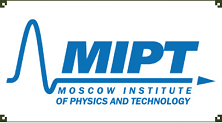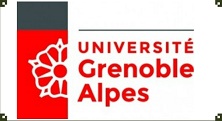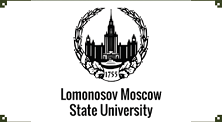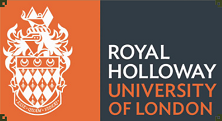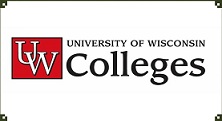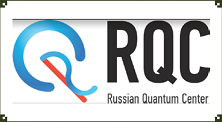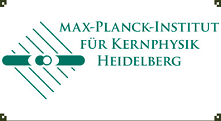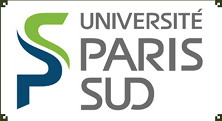Day :
- Quantum Science | Quantum States | Quantum Field Theory | Theory of Everything: String Theory | Flow of Time | Quantum Physics and the Universe
Location: v.Kleist

Chair
Ozhigov Yuri Igorevich
Moscow State University, Russia

Co-Chair
Eli Pollak
Weizmann Institute of Science, Israel
Session Introduction
David Pappas
NIST, USA
Title: Electromagnetically induced transparency in circuit quantum electrodynamics with nested polariton states
Time : 12:35-13:00

Biography:
David P Pappas is a Research (project leader) at NIST including quantum bit coherence improvements and magnetic sensors. He has his research interest in the
area of quantum computing. Dr. David Pappas has over 75 publications.
Abstract:
In this presentation, we report the observation of Electromagnetically induced transparency (EIT) in a superconducting circuit system using strictly single-photon processes and polariton states in the nesting regime. EIT originates from quantum interference in an atomic three-level system. To achieve this, we first drive the dressed cavity-qubit states of a two-dimensional circuit QED system. This generates a set of polariton states. With proper tuning, we achieve the nesting regime, defined by the regime where the first two levels of the Jaynes-Cummings ladder bracket the drive frequency. The lowest three energy levels of the polariton states are utilized to form the $Lambda$-type system. EIT is observed and verified by Akaike's information criterion based testing. Negative group velocities up to $-0.52pm0.09$~km/s are obtained based on the dispersion relation in the EIT transmission spectrum. This results in a versatile, on-chip quantum-optics platform using tunable polaritons.
Hazel Cox
University of Sussex, UK
Title: Correlated motion in atomic and three-particle molecular systems
Time : 13:00-13:25

Biography:
Hazel Cox is a Senior Lecturer in Chemistry at the University of Sussex. Her first degree is in Mathematics and for her PhD she used Computer Algebra to solve the Schrodinger equation for three particle systems. Her research interests involve using quantum chemistry to determine the underlying chemical and physical properties responsible for the structure, reactivity and spectroscopy of metal-ligand complexes and to probe the boundaries of current methodologies by exploring the fundamental interactions in few particle Coulomb systems.
Abstract:
High accuracy, non-relativistic, calculations are used to study the electronic and nuclear motion in the ground state of threeparticle atomic and molecular systems using a series solution method with a triple orthogonal Laguerre-based wavefunction. This method is adapted to calculate, in a single variational calculation, the critical mass of a third particle required for stable binding to a two-particle system and the critical nuclear charge for binding of two-electrons and, in part, to calculate high-precision Hartree- Fock energies and expectation values. Accurate determination of fully correlated electron densities is important for those involved in developing correlation functionals for density functional theory (DFT). The correlated motion of electrons, including at low nuclear charge Z, is quantified using radial and angular densities and the Lowdin definition of electron correlation. Results confirm the presence of a secondary Coulomb hole for helium, and results for the anionic systems H- and the critical nuclear charge system, indicate that only a primary Coulomb hole exists. In mainstream quantum chemistry, it is usual to treat molecules within the Born- Oppenheimer approximation, a molecular structure is assumed and the equilibrium structure corresponds to a local minimum structure on a potential energy surface. In the present work, no such assumptions are made and atoms and molecules are treated on an equal footing as few-particle quantum systems. Results will be presented demonstrating that the nuclear motion in diatomic ions is strongly correlated; by evaluating the particle density at the centre of mass, it is shown that the spatial distribution/localization of the like-charged particles depends on the relative masses of the nuclei rather than just their absolute mass and that molecular structure arises naturally from the analysis of the all-particle wavefunction.
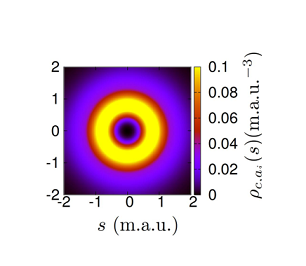
Figure: Centre of mass particle density plot for μDT+
Lunch @ Restaurant Theodor’s 13:25-14:25
Aleksey V Ilyin
Moscow Institute of Physics and Technology, Russia
Title: On some unknown features of the Bose-Einstein statistics
Time : 14:25-14:50

Biography:
Aleksey V Ilyin graduated from the Department of Quantum Electronics (1976) in Moscow Institute of Physics and Technology (MIPT), and received PhD degree in Physics and Mathematics from the Department of General Physics of MIPT (1979). He was engaged as an Associate Professor of Physics at the Orenburg Polytechnic Institute and Moscow Institute of Physics and Technology, and took part in various research projects and academic activities. His current academic rank is an Associate Professor of Physics. His scientific interests include waveguide lasers, nuclear magnetic resonance, nondestructive testing, computer-aided learning, quantum optics, quantum statistics, and foundations of quantum physics.
Abstract:
It is proven within the Bose-Einstein statistics that the blackbody radiation contains photon clusters along with single photons. The existence of photon clusters in blackbody radiation is shown to be an inevitable consequence of the fact that the Bose-Einstein statistics is a special case of Compound Poisson Distribution. This mathematical fact means that the BE statistics describes random events of two different types: elementary events and composite events, each composite event consisting of a random number of elementary events. In the case of photon statistics, an elementary event may only be the registration of a single photon by an ideal detector. Then a composite event will be a simultaneous registration of several photons, i.e. of a photon cluster. In this work, statistics of photon clusters and probability that a photon cluster contains N photons are found versus radiation frequency and temperature. Spectra of photon-cluster radiation in a blackbody cavity are calculated for arbitrary cluster ranks. Derivation of the Planck's radiation law is discussed in view of the existence of photon clusters in blackbody radiation. Finally, we analyze some properties of photon clusters. It is proven that the behavior of photon cluster field is incompatible with the Maxwell’s equations for electromagnetic radiation. Therefore, a photon cluster field cannot obey the Maxwell’s equations. A decades-long search for suitable equations carried out by many researchers is reviewed. Strong arguments are presented in favor of the conclusion that a 2-photon cluster field is a rank-2 tensor field that must obey the Einstein field equations of general relativity. For that reason, a 2 photon cluster field must propagate as if it were an optical-frequency gravitational wave.
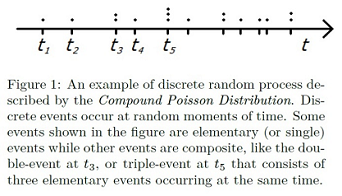
Wiebke Guichard
Université Grenoble-Alpes, France
Title: Weak and strong non-linear effects in Josephson junction chains
Time : 14:50-15:15

Biography:
Wiebke Guichard is a Professor at University Grenoble Alpes. During her PhD in the low temperature laboratory CRTBT/CNRS in Grenoble, she realized the first phase-sensitive measurement of a ferromagnetic hybrid π-junction. Her Postdoc research at KTH in the group of David Haviland, dealt with Bloch oscillations both in a single junction and in a Cooper pair transistor (CPT), coupled to a highly resistive environment consisting of SQUID arrays. Since September 2004, she is a working in the Superconducting Quantum Circuit group in the Neel Institute in Grenoble together with Olivier Buisson and Nicolas Roch. She worked at the beginning on a coupled qubit-circuit between a phase-qubit and a charge qubit. Since 2008, she is working on quantum dynamics in Josephson junction chains and
currently she is supervising a project on non-linear effects in Josephson junction chains.
Abstract:
I will present our microwave transmission measurements on propagation modes in Josephson junction chains containing several hundreds of junctions. After some preliminary measurements we have done a more systematic measurement in an improved measurement set-up that I will present. Some of the chains have been embedded into the microwave strip line, while others have been coupled capacitively to it. The latter configuration enables a study of the internal quality factor of the chain while the first one is more suited to study quantitatively the Kerr effects occurring between different modes in the chain. The experimental dispersion curve of this meta- material fits well the theoretical prediction. We measured the Self- and Cross Kerr effects by two-tone spectroscopy measurements for the first 8 modes of the chain and compare them to theory. Secondly, I will show our recent results on the realization of a fluxonium qubit. I will discuss spectroscopy measurements and measurements of the relaxation and decoherence time of this qubit. At the end I will discuss future experiments with fluxonium type devices.
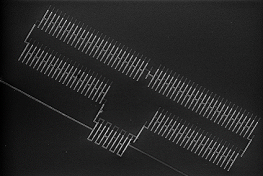
Figure: A fluxonium qubit fabricated at the Néel Institute Grenoble
Yuri I Ozhigov
Moscow State University of Lomonosov, Russia
Institute of Physics and Technology - RAS, Russia
Title: Finite dimensional models of QED
Time : 15:15-15:40

Biography:
Yuri I Ozhigov was educated in Moscow State University of Lomonosov – MSU (Faculty of Mechanics and Mathematics in 1979) and obtained PhD degree in Algebra in 1982. He worked as Researcher in IT of building industry, then was Assistant Professor and Associate Professor in Moscow Textile Institute and Moscow Institute of Instruments and Tools (STANKIN). In 2000, he is leading Researcher in Institute of Physics and Technology of Russian Academy of Sciences (FTIAN). He obtained Doctor of Science degree in Theoretical Physics. From 2001, he is Full Professor of MSU (Faculty of Computational Mathematics and Cybernetics - VMK).
Abstract:
We consider quantum effects in the conductivity of atomic excitation energy through the chains of optical cavities with two-level atomic ensembles inside in the presence of dephasing noise. Computer simulation of the process was fulfilled by quantum master equation in the framework of Jaynes-Cummings and Tavis-Cummings-Hubbard models with RWA approximation. We reproduce the effects DAT (dephasing assisted transport) and quantum bottleneck and established the nontrivial connections between them. Darkness and semi-darkness of atomic ensembles and their influence to the conductivity is also discussed.
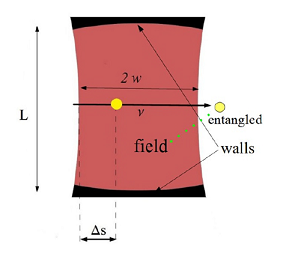
Vladimir N Antonov
Royal Holloway University of London, UK
Moscow Institute of Physics and Technology, Russia
Title: Quantum wave mixing and resolving photonic classical and non-classical coherent states
Time : 15:40-16:05

Biography:
Vladimir N Antonov has his expertise in Solid State Nanophysics. He is one of scientists who made a breakthrough in experiments on quantum phenomena in low dimensional hybrid nanostructures, like Andreev interferometer, ferromagnetic/superconducting systems. A single photon terahertz detector based on semiconductors quantum dot developed in collaboration with Profs. Komiyama and Astafiev keeps a record sensitivity and it is used in a number of applications. A recent activity in superconducting quantum circuitry, superconducting resonators of high quality factors, and nanomagnetics is a subject of a number of publications in high ranked journals. He is also involved in development of the technology of high power diode laser for communications as an expert in nanofabrication.
Abstract:
Superconducting quantum systems- artificial atoms are building blocks of novel on-chip quantum electronics, which utilize the quantum nature of electromagnetic waves. Particularly, single atoms can create and reveal quantized light states beyond classical statistics. In this work we demonstrate a novel fundamental physical phenomenon, the Quantum Wave Mixing (QWM), which is attainable only in the systems where light-matter interaction is arranged between an individual photons and a single atom. QWM reveals itself as an elastic scattering of coherent classical and non-classical photonic states of electromagnetic waves on a single artificial atom in a 1D space. We demonstrate two regimes of QWM, comprising different degrees of “quantumness". The most spectacular one is QWM with non-classical coherent states, exhibiting spectra of a finite number of narrow coherent emission peaks. The spectrum is a fingerprint of interacting photon states, where the number of positive frequency peaks (due to stimulated emission) always exceeds by one the negative ones (due to absorption). We also study four- and higher-order wave mixing of classical coherent waves on the artificial atom. In this case the time dynamics of the peaks exhibits a series of Bessel-function quantum oscillations with orders determined by the number of interacting photons.
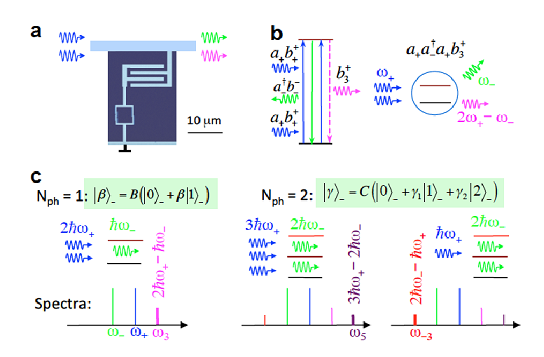
Figure: a) A false colored SEM image of the device a superconducting loop with four Josephson junctions, behaving as an artificial atom, is embedded into a transmission line and strongly interacts with propagating electromagnetic waves. b) Four-wave mixing processes resulting in the single-phoon field creation at ω3=2ω+-ω-. In classical mixing, the process operators a+a*-a+b+3 come in pair with the symmetric one a-a*+a-b+3. In the mixing with non-classical states, the time symmetry is broken resulting in the asymmetric spectrum. c) Schematic representation of QWM with non-classical coherent states. Two sequential pulses of ω+. Single-photon, Nph = 1, state |β>- can only create a peak at ω3=2ω+-ω-. Two photon, Nph = 2, coherent state |γ>- results in creation of an additional; peak at 3ω+-2ω-. because not more than two photons can be emitted. An additional left-hand-side peak appears at 2ω--ω+ in this case.
Aviad Frydman
Bar Ilan University, Israel
Title: Experimental probing of quantum criticality at the superconductor-insulator quantum phase transition
Time : 16:25-16:50

Biography:
Aviad Frydman is an associate professor at the Department of Physics, Bar Ilan University, Israel. He completed his PhD for the thesis “Quantum Mechanical Tunneling in the Presence of Intermediate States.” in the year 1996 from Hebrew University of Jerusalem.
Abstract:
The superconductor-insulator transition (SIT) is a prototype of a quantum phase transition which is very versatile experimentally: varying a non-thermal tuning parameter such as disorder, thickness, composition, magnetic field or gate-voltage causes the system to switch from a superconductor to an insulator at zero temperature. Unlike their classic counterparts, quantum phase transitions are governed by quantum rather than thermal fluctuations at low temperatures. The direct experimental study of such fluctuations close to the SIT is rather challenging. So far research has mainly concentrated on DC resistivity based measurements such as transport and magnetoresistance and on global and local tunneling spectroscopy. These cannot provide explicit information on the critical behavior through the transition. In my talk, I will describe two experimental efforts designed to measure signatures of quantum fluctuations close to quantum criticality. The first experiment utilizes a unique, highly sensitive, setup to measure the specific heat of ultrathin Pb films through the SIT. The specific heat is found to increase considerably as the sample is pushed towards the SIT thus signaling quantum criticality. The second experiment is a scanning squid measurement able to probe local susceptibility in TiNbN films close to the quantum transition. These studies reveal electronic superconducting granularity which fluctuates in time and space at temperatures well below Tc. The temperature regime of these fluctuations grows as the SIT is approached indicating their quantum nature. I will discuss the significance of these results and their contribution to understanding the electronic processes in the vicinity of the quantum phase transition.
Tina Matzat
CEO and Founder of Qbit Films, Germany
Title: 3025 – Science in fiction
Time : 16:50-17:15
Biography:
Tina Matzat was born into communist Germany in November 1985. After graduating from high school she moved to Berlin in 2005 to study Information Science in Potsdam. In the next couple of years she worked as an intern and project manager in Berliner start ups, ending up being an international conference manager at IQPC. She quit this kind of career to start writing at the age of 26, finished her first novel with 29 and since then works on the script for the Sci-Fi film "3025". In the meantime she is working on short films as a writer, director and producer via her own company Qbit Films.
Abstract:
The main problem the protagonists in the science fiction film “3025” are facing is the same that AI researchers are facing which is also the main problem of system theory. Would it be possible to create / exist outside the box? So the idea of free will and the power of consciousness are the main themes. After all, in a system where consciousness creates matter, everything that is thinkable is possible and the system (the human) should be able to emancipate from its original source. As a basic for this futuristic world the film offers various theoretical explanations to questions about the beginning of our universe and time itself, humanity's origin and purpose, the nature and fabric of our reality, time travel, teleportation, energetic perception, the micro- and macrocosm, gravity and quantum entanglement – inspired by (meta)physics and quantum sciences.
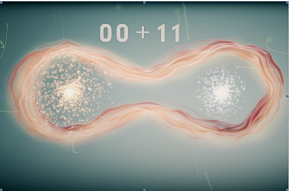
John Owen Roberts
University of Liverpool, UK
Title: Proposed link between the periodic table and the standard model
Time : 17:15-17:40

Biography:
John Owen Roberts has been an Open University Science Tutor for 30 years having attended Rutherford-Appleton Lab and CERN as a summer school student. He has been a Freelance Tutor of Maths, Physics and Chemistry for many years and wrote the book “Those Infinities and the Periodic Table” over a period of 5 years from an idea in December 2010.
Abstract:
The patterns of stable quantum states in the Periodic Table are inverted and extended to infinity in both directions to accommodate spatial variation relative to the nucleus. The upper end leads to a cut off point for white matter. The lower end represents quantum states in plasma. At 10-15 m to 10-20 m the interaction between weak strong and gravity forces results in suitable boundary conditions for the production of elementary particles. Chemical classification of the elements requires convergence of chemical properties and quantum states. By defining Group Number as the maximum number of electrons in any one shell, Hydrogen and Helium are moved to the first set of 2(1)2 states first proposed by Janet. The atomic numbers are adjusted and mass number removed as it is an average of isotopes of each element produced in every supernova. This produces the Roberts Janet Nuclear Periodic Table which proposes two zero states, a cut off and start point, of the electric field in attractive then repulsive modes. By symmetry of these fields energy states emerge in plasma with the counter intuitive property that the nearer the nucleus the greater the number of energy states. Fusion results and the consequential recycling implies a more rapid collapse than supernovae given sufficient energy density that could create an as yet unobserved interaction at 10-50 m to 10-65 m between the strong and gravity forces. String theory and extra dimensions may be required to explain such mechanisms and multiverses.
Adam Baskerville
University of Sussex, UK
Title: Excited S states of two electron atoms
Time : 17:40-18:05

Biography:
Adam Baskerville is a PhD student at the University of Sussex working on the quantum mechanical three body problem under the supervision of Dr Hazel Cox.
Abstract:
Electronically excited states are vital for the analysis of spectroscopic properties. However, usually theoretical methods assume that nuclei are infinitely heavy. Recently we have shown that it is possible to calculate high accuracy, non-relativistic excited S state energies and wavefunctions for three particle systems using a series solution methodology. In this talk, details of the theory and implementation will be described and the latest results presented. This builds upon our previous work for the ground state problem which uses a series solution method utilising a triple orthogonal Laguerre polynomial wavefunction to investigate the bound state properties of the ground state of three-particle atoms and molecules. The excited state implementation is based on the work of Pekeris, however in the present work the effects of nuclear motion are explicitly included. It is found, contrary to the matrices for the ground state problem, that the matrices become denser in the excited state formulism. Up to three non-linear variational parameters can be used to improve the rate of convergence, and the quality of the wavefunctions is assessed using various exact conditions and identities.
The content in this talk highlights the versatility of using the series solution method to solve a non-separable Schrodinger equation, and how a Laguerre-based wavefunction captures the physics of excited states. Furthermore, this method could potentially be used to probe highly excited Rydberg states which have recently been proposed as a possible logic gate in quantum computing applications.


Figure: Comparison of the secular equation for the ground state problem (left) vs. the excited state problem (right). White = zero elements, black = non-zero elements.
- Quantum Information and Quantum Computing | Quantum Optics | In Depth Quantum Mechanics | Quantum Mechanics Interpretations | Quantum Transport and Dissipation | Physical Mathematics | Quantum Technology
Location: v.Kleist

Chair
Eliade Stefanescu
Center of Advanced Studies in Physics of the Romanian Academy, Romania

Co-Chair
Hazel Cox
University of Sussex, UK
Session Introduction
Valentyn A Nastasenko
Kherson State Maritime Academy, Ukraine
Title: New principles of solving the problem of combining the gravitational and electromagnetic fields
Time : 12:05-12:30

Biography:
Valentyn A Nastasenko is a Professor of Department of Transport Technologies of Kherson State Maritime Academy, Kherson. He is a Candidate of TechnicalSciences (PhD). His specialization is in quantum physics and basis of the material world. He has more than 100 published articles in this sphere.
Abstract:
Strict physical regularities were obtained for the first time that allows to single out wave characteristic p from gravitational constant G which is identified with the frequency of gravitational field. On this base, other wave and substance parameters were strictly defined and their numerical values obtained. It was proved that gravitational field with the given wave parameters can be unified only with electromagnetic field having the same wave parameters that's why it is possible only on Plank's level of world creation. The solution of given problems is substantiated by well-known physical laws and has great theoretical and practical importance for understanding the fundamentals of material world and the Universe as a whole which is urgent not only for the development of physics but also for the development of other fields of science, within the frames of the necessity of constant widening of knowledge about material world and physical fields which make it up.
Alexey A Kryukov
University of Wisconsin College, USA
Title: On the motion of macroscopic bodies in quantum theory
Time : 14:20-14:45

Biography:
Prof. Kryukov received his doctoral degree from the School of Mathematics of the University of Minnesota and from Division of Theoretical Physics, Department of High Energy Physics of St. Petersburg State University. He is currently professor of mathematics at the Department of Mathematics, University of Wisconsin Colleges. His research interests are in Functional Analysis, Differential Geometry, and Quantum Theory and General Relativity. His recent publications in JMP, Physics Letters and Foundations of Physics are dedicated to finding a bridge between classical and quantum physics and gravity.
Abstract:
Quantum observables can be identified with vector fields on the sphere of normalized states. The resulting vector representation is used in this paper to undertake a simultaneous treatment of macroscopic and microscopic bodies in quantum mechanics. Components of the velocity and acceleration of state under Schroedinger evolution are given for a clear physical interpretation. Solutions to Schroedinger and Newton equations are shown to be related beyond the Ehrenfest results on the motion of averages. A formula relating the normal probability distribution and the Born rule is found.
Aleksey Fedorov
Russian Quantum Center, Russia
Title: Quantum key distribution networks and their applications for blockchain-based technologies
Time : 12:30-12:55

Biography:
Aleksey Fedorov graduated from Bauman Moscow State Technical University (MS, 2016) and COMPLETED PhD from University of Paris-Saclay (2017). For excellent academic achievements, he was awarded by a number of prestigious scholarships such as Russian Federation Government Scholarship (2013-2014), Russian President Scholarship (2014-2015), Bauman University Scientific Committee Scholarship (2014), Bauman University Alumni Club Scholarship (2015), and many others. His research activities were recognized by the RQC fellowship for undergraduate students (2013-2015) and the Dynasty Foundation Fellowship for undergraduate students (2014-2015). Research interests are at the interface of quantum optics, atomic and molecular physics, condensed matter physics, and quantum information science.
Abstract:
The blockchain is a distributed ledger platform with high Byzantine fault tolerance, which enables achieving consensus in a large decentralized network of parties who do not trust each other. A paramount feature of blockchains is the accountability and transparency of transactions, which makes it attractive for a variety of applications ranging from smart contracts and finance to manufacturing and healthcare. Blockchain relies on two one-way computational technologies: hash functions and digital signatures. Most blockchain platforms rely on the elliptic curve public-key cryptography or the integer factorization problem to generate a digital signature. The security of these algorithms is based on the assumption of computational complexity of certain mathematical problems. A universal quantum computer would enable efficient solving of these problems, thereby making digital signatures, including those used in blockchains, insecure. A way to guarantee authentication in the quantum era is to use quantum key distribution, which guarantees information-theoretic security based on the laws of quantum physics. Quantum key distribution is able to generate a secret key between two parties connected by a quantum channel (for transmitting quantum states) and a public classical channel (for post processing). In this contribution, we describe a blockchain platform that is based on quantum key distribution and implement an experiment demonstrating its capability in a three-node urban quantum key distribution network. We believe this scheme to be robust against not only the presently known capabilities of the quantum computer, but also those that may potentially be discovered in the future to make post-quantum cryptography schemes vulnerable. The utility of quantum key distribution for blockchains may appear counterintuitive, as quantum key distribution networks rely on trust among nodes, whereas the earmark of many blockchains is the absence of such trust. Employing quantum key distribution for communication between two parties via a direct quantum channel permits these parties to authenticate each other. That is, nobody can pretend to be somebody else when introducing a transaction. Quantum key distribution, in combination with classical consensus algorithms, can be then used in lieu of classical digital signatures.
Nathan Welch
University of Nottingham, UK
Title: Vibrational state control of BECs using stochastic webs
Time : 13:55-14:20

Biography:
Nathan Welch is a Research Fellow in Quantum Technologies at the University of Nottingham. His research focus is the design and optimisation of experimental quantum systems, including magnetic fields, optics and atom-surface coupling. Part of his PhD research involved modelling and optimising complex multicomponent electromagnetic systems, which included integrating the optical and magnetic sensitivity of atomic gases across the classical and quantum regimes. His work also included analysing phenomena such as chaotic atom motion in laser beams and Casimir attraction between atoms and condensed matter surfaces, including electronic control chips. He is particularly interested in using this insight to improve on previous system design and allowing new physical paradigms to be explored and exploited in new industry capabilities and products.
Abstract:
It has previously been shown that non-KAM chaotic motion can be exhibited in a range of systems, from semi-conductors to tokamak fusion reactors. We show that using this particular type of motion, we can controllably excite both non-interacting and repulsive Bose-Einstein condensates (BEC) with a travelling wave optical lattice (OL). We then show that the magnitude of this excitation is dictated by the spatial form of the OL whilst the depth of the OL controls its rate. This classical chaotic motion then enters the quantum regime when the magnitude of the excitation is set to only a few quanta of the quantum harmonic oscillator (QHO) level spacing. In this regime, we see a departure from the classical results and instead we see that for a set of key OL wavelengths, we can cause population transfer between different QHO states with unprecedented precision, as shown in figure. Further, we show that whilst superpositions of states are difficult to achieve, due to coupling between differing level populations, excitation schemes can be found which create desired superpositions of these semi-classical QHO Fock states. We show this by creating a range of cat states in a large number of atoms, which previously have only been achieved on such a scale in photonic and phononic systems. All of our theoretical models are based on experimentally achievable systems and so could be utilized in a wide range of applications from quantum computation, superpositions of large ensembles and the coupling of atoms to macroscopic objects.
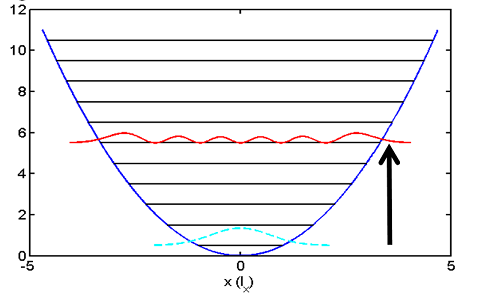
Biography:
Eugene A Machusky is currently Head of the Department of Technical Information Protection Systems, Scientific Director of Special Design Bureau "Storm" in National Technical University of Ukraine "Kyiv Polytechnic Institute" (KPI), Kyiv, Ukraine. He received Master’s in Engineering (1974), PhD (1979), DSc (1989) from NTUU-KPI. He is a Research Visitor at University of North Wales (1983-1984, Bangor, UK), Visiting Professor at Harbin Technological University (2015-2018), China. He is the Author and Editor of Radio Engineering Encyclopedia (Kyiv 1999; Moscow 2002, 2009, 2016) has written articles in Great Ukrainian Encyclopedia (2016, 2017). His field of interest include: Microwave Electronics, Underwater Acoustics, Information Security, Mathematical linguistics
Abstract:
The absolute quantum metric of 3D-motion of spheric wave fronts was developed using the rigorous parabolic, hyperbolic, trigonometric and logarithmic relationships of the geometric parameters of the pulsating and rotating spiral. It was discovered that one matrix expression [G] = 2*PI*[R]*(1+[A]), four rational numbers A = 137 (Sommerfeld's integer), B = 602214183 (Avogadro's integer), R = Integer{10^8*(C/10^7)^(1/64)}/10^8 = 1.05456978 (Dirac's radius), C = (R+4*PI*C/10^18)^64*10^7 = 299792457.86759104 (Maxwell's speed) and two transcendental numbers PI and E is sufficient to calculate twelve gauge parameters that completely describe and absolutely coordinate all basic constants of thermodynamics, electrodynamics and gravidynamics. It was also discovered that the radii and eccentricities of the pulsating and rotating spiral are linked by the equation R = 1+2/100*(E+ A*(1+Sqrt(2*PI*E)/10))) where Sqrt(2*PI*E) is the argument of the information entropy of the normal distribution. The expression [P] = 2*PI*[R] generates the Planck's perimeter matrix. The expression [G] = [P]*(1+[A]) generates the Newton’s density matrix. The expression [KB] = Cos(12-[A]/10) - Sin(12- [A]/10) generates the Boltzmann’s polarization matrix. The information entropy matrix of Avogadro is generated instantly by the matrix expression [NA] = 100*{Sqrt[8*PI*E/(8*PI*E+137^2]/(1+2*[A]/1000) - 5/10^8}. The Maxwell's speed has been obtained from the equations C = (R+4*PI*C/10^18)^64*(10^7) and C = (R+4*PI/10^18)^64/(10^1). The decimal orders of fundamental quantum constants are obtainable from the approximate expression E^137 = (100*PI)*(10^57) and Wien’s wavelength displacement formula for the blackbody irradiation. We would like to draw your attention to the fact that for the first time the absolute values of the speed of light, background temperature, fine structure, elementary charge, molar mass, gravitation, Kelvin's, Avogadro's, Boltzmann's and Planck's units were determined analytically without the use of artifacts such as m, s, kg, without the use of Feynman's energy diagrams and without any measurements at all. All quantum constants are, in fact, the harmonic medians of the half-normal and the log-normal distributions of the normalized space-time parameters of spherical waves and all calculated values lie within the uncertainty of the latest NIST data. Thus, the proposed unified metric can be used as the basis of the New SI-2018 measurement system.
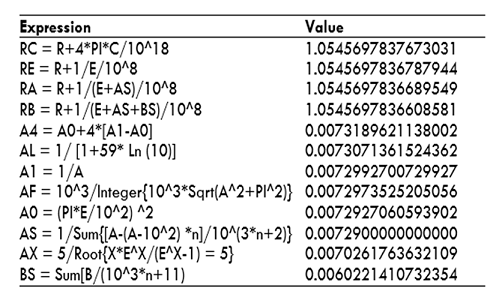
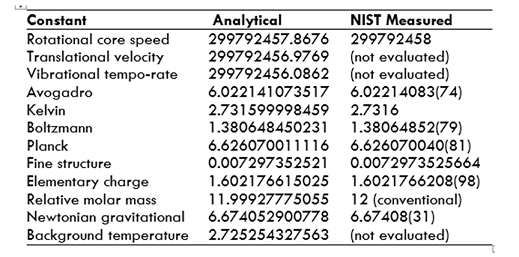
The presented analytics can be interpreted as the logarithmically compressed 2D-image of the 3D-motion of the pulsating sphere and as the matrix bridge between continuous and discrete mathematics. Having as a tool the modified Euler’s formula E^(j*PI) +1 = [A]/ (10^57), we can say: "The way to quantum programming and computing is opened".
Dmytro Progonov
NTUU - KPI, Ukraine
Title: Information entropy of quantum dynamics
Time : 15:10-15:35
Biography:
Dmytro O. Progonov holds position of Associate Professor in Dept. of Physics and Information Security Systems, NTUU “KPI”. He received M.Sc. (2013) and PhD (2016) in information protection systems from KPI. Fields of interest: Information Security, Digital Media Steganalysis, Machine Learning and Big Data Analysis.
Abstract:
Analytically it is established: all fundamental constants of quantum physics are quasi-harmonic functions of information entropy argument Sqrt(2*PI*E) of normal distribution. Information entropy of quantum calculus is fundamental law of nature, which cannot be less than 10^(-64) (binary calculus) and about 1/137/(10^57) (decimal calculus). In polar coordinates the minimal information entropy of relative geometrical parameters cannot be less than 10^(-17) because of the unique 17-digit mirror symmetry of squared 9-digit qubit:
(111111111)^2 = 12345678987654321 (finite mirror symmetry),
(111111111...)^2 = 123456790123456790...(infinite periodic symmetry),
(111111111...)^3 = 137174211248285322...(cubed infinite qubit).
It is easy to show that
AS = 1/100/(1.11111...)^3= 1/Sum{[137+(137-100)*n]/10^(3*n)],
AS = 0.00729 = (9^3)/(10^5),
where the so called Feynman-Born-Eddington-Sommerfeld "magic alpha-number" 1/137 = 0.0072992700729927...= Sum{729927/10^(8*n)} is unique number of infinite mirror symmetry of reciprocal natural set. Square of sum of root mean, of arithmetical mean, of geometrical mean and of harmonic mean of two transcendental numbers PI and E the SMS ={sqrt[(PI^2+E^2 )/2]+(PI+E)/2+sqrt(PI*E)+2*PI*E/(PI+E)}^2, this is very close to 137, and E^137 is very close to 100*PI*10^57.
The second "magic number" of quantum physics is the Avogadro's integer 602214183:
Sum{602214183/(10^3*n+11)} = 0.00602816999...999397183 = 0.0062817 = BS.
The Sum (E+AS+BS) instantly gives us the exact 17-digit Kelvin's number K = 2.7315999984590452. Exact entropy value of normalized Maxwell's rotational speed is obtained instantly from two transcendental equations:
C = (R+4*PI*C/10^18)^64*(10^7) = 2.9979245786759134*(10^8), C = (R+4*PI*C/10^18)^(64)/(10) = 2.9979245786759074*(10^8), where R = Integer{10^8*(C/10^7)^(1/64)}/(10^8) = 1.05456978. Thus, the information entropy of speed of light value is about (60/2)/(10^16).
As an example, the information entropy of quantum calculus is illustrated in the table 1 by the comparison of transcendental number Cos(PI/6) and irrational number Sqrt(3)/2.
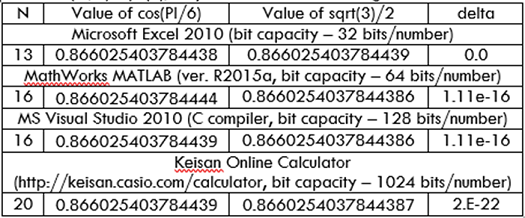
All the fundamental constants of quantum physics are, in fact, the relative geometric parameters of pulsating and rotating spirals or the parameters of the connection of integers with irrational numbers that create the holographic two-dimensional image of the three-dimensional motion of wave fronts. It can be shown that the information entropy of quantum units changes from 10^(-4) for the gravitation constant up to 10^(-16) for the fine structure constant. And there is no need to use any artifacts, such as m, s, kg, in any metric system, because Quantum Physics, as a whole, is an absolute universal relative dynamic metric system, a digital bridge between continuous and discrete mathematics.
Adriana Palffy
Max Planck Institute for Nuclear Physics, Germany
Title: X-ray quantum optics
Time : 15:35-16:00

Biography:
Adriana Palffy has studied Physics in Bucharest, Romania, and received her PhD in theoretical physics at the Justus Liebig University in Giessen, Germany. Since 2011 she is the Leading Scientist of the group Nuclear and Atomic Quantum Dynamics at the Max Planck Institute for Nuclear Physics in Heidelberg, Germany. Among her research interest, covering the interface between atomic and nuclear physics and quantum optics, she has been an active participant in the development of the burgeoning field of x-ray quantum optics. Seminal works include the theoretical study of the interaction of x-ray free electron laser radiation with matter, storage and coherent control of single x-ray quanta, and an optomechanical interface of optical and x-ray photons.
Abstract:
Recent years have witnessed the commissioning of coherent x-ray sources opening the new field of x-ray quantum optics. While not yet as advanced as its optical counterpart, it may enable coherent control of x-rays, with potential applications for the fields of metrology, material science, quantum information, biology and chemistry. Compared to optical photons, x-rays profit from better detection, robustness, high penetrability and, due to their shorter wavelength, focussability, pushing the diffraction limit far beyond present-day limitations. These advantages bring into focus x-rays for promising applications for instance as future information carriers, or for novel probing technologies based on quantum effects. Due to their suitable transition energies, nuclei rise as candidates for the resonant interaction with coherent x-ray light. Here, we investigate how to use nuclear transitions in the x-ray regime to manipulate single x-ray quanta. The key for such control is the use of Mossbauer transitions in solid-state targets which enable collective effects to come into play in the nuclear excitation and decay processes. Particularly successful systems to exploit collective effects of nuclei in x-ray single-photon superradiance have proved to be thin-film planar x-ray cavities with an embedded 57Fe nuclear layer. For instance, we have shown that narrow-band x-ray pulses can be mapped and stored as nuclear coherence in a thin-film planar x-ray cavity with an embedded iron layer. Further control can be achieved by coupling x-ray quanta to an optomechanical device. We have demonstrated theoretically that using resonant interactions of x-rays with nuclear transitions, in conjunction with an optomechanical setup interacting with optical photons, an optical-x-ray interface can be achieved. Such a device would allow to tune x-ray absorption spectra and eventually to shape x-ray wavepackets for single photons by optomechanical control. We show that optomechanically induced transparency of x-rays can be achieved in the optical-x-ray interface paving the way for both metrology and an unprecedentedly precise control of x-rays using optical photons.
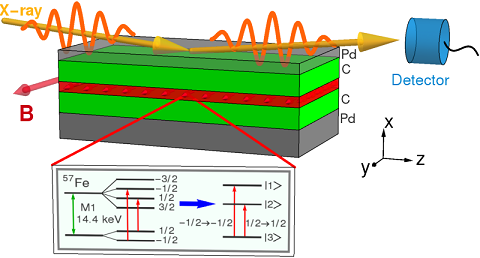
Figure: Thin-film planar cavity setup with x-ray grazing incidence. The cavity consists of a sandwich of Pd and C layers with a 1nm layer containing 57Fe placed at the antinode of the cavity. The nuclei experience a hyperfine magnetic field B (red horizontal arrow). Inset panel: 57Fe level scheme with hyperfine splitting.
Rosa Tualle-Brouri
Université Paris Sud, France
Title: Iterative generation of non-classical states of light
Time : 16:20-16:45

Biography:
Rosa Tualle-Brouri is Professor at Institut d’Optique Graduate School. She is a recognized expert in quantum information and quantum optics and was, from October 2010 to October 2015, a Junior Member of the Institut Universitaire de France. She’s leading the effort of the Continuous-Variable team in the Quantum Optics group which obtained several “world firsts” in the fields of continuous variables quantum cryptography and non-Gaussian states conditional generation.
Abstract:
Mesoscopic quantum states of light, which may contain several photons and present a complex quantum structure, could open very interesting new prospects in quantum optics. Optical Schrödinger cat states for instance, which are quantum superpositions of two coherent states (figure), could be used in quantum computing as they allow an implementation of all basic quantum gates by using only classical photonics tools: beamsplitters, phase shifters, photon counters. We show the possibility to generate such states very efficiently through the iteration of a quite simple operation: the superposition of two states on a beamsplitter, followed by a heralding quadrature measurement in one output port of this beamsplitter. We will discuss the potential of synchronized optical cavities in the pulsed regime to generate complex mesoscopic quantum states through such iterative schemes. Single-photons are a main resource for these targeted protocols, but pure states in well-defined spatio-temporal modes are required in order to perform relevant homodyne measurements. We will present a setup for high-rate single-photons generation, based on exaltation cavities in the pulsed regime, and discuss the way to synchronize this source with another cavity in order to have a quantum memory and to implement new kinds of innovative quantum protocols.
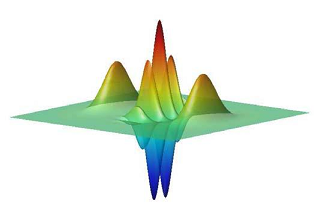
Figure: Theoretical Wigner Function of an Optical Schrödinger cat state, constituted by two coherent states clearly separated in the figure, and by oscillations in the center that are a signature of the quantum nature of the superposition.
Josef Oswald
Montanuniversität Leoben, Austria
Title: Many particle interactions in the integer quantum hall effect regime
Time : 16:45-17:10

Biography:
Josef Oswald has his expertise in experimental and theoretical investigations of low dimensional electronic systems in the quantum Hall effect regime. Beginning with the epitaxial growth of so called doping super lattices and their experimental characterization he moved on to the realization of wide parabolic quantum wells which represent electronic systems in an intermediate regime between 2D and 3D. The results of this work led to new approaches for the modelling of carrier transport in high magnetic fields that finally turned out to be quite useful also for the pure integer quantum Hall effect regime.
Abstract:
Even more than 35 years after discovery of the integer quantum Hall effect (IQHE), it is widely believed that the IQHE regime is dominated by single-particle interactions. Up to date the widely accepted and state of the art model for screening in the IQHE regime is the model of Chlovskii, Shklovskii and Glazman (CSG) which is based on pure Hartree interactions. Recent scanning gate microscopy (SGM) experiments by Pascher et al. (ETH Zürich) indicate that the screening behaviour within the so called compressible stripes is much weaker than predicted by the CSG approach. In a recent paper, we argue that quite opposite to the common belief, the early models for the IQHE based on non-interacting single particles have been most successful not because of the absence, but rather due to the dominance of many-body effects. We utilize a fully self-consistent Hartree-Fock implementation and a network model for magneto transport close to equilibrium. Our results indicate a strong tendency of the electron system to avoid the simultaneous existence of partially filled spin-up and spin-down Landau levels (LL), similar to a Hund's rule for the occupation of the spin split LLs. Instead of a continuous lateral variation of the carrier density we get an exchange driven mixture of condensed clusters of full and empty LLs, which leads also to a reduced screening. At higher LLs these clusters are surrounded by novel halfodd integer stripes (Fig.1a) that serve as transmitting channels for transport (Fig.1b). In order to avoid a violation of the physics of coherent many-particle quantum transport, we use a network model for magneto transport that does not make explicit use of single carrier flow, but instead addresses the lateral transmission of the non-equilibrium chemical potential that is introduced by the current supply contacts. Various examples will be given for demonstrating the role of many body interactions.

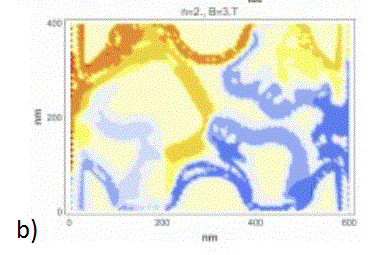
Figure: a) Lateral filling factor distribution of the highest partly filled spin-up LL in the QH transition regime as obtained from the Hartree-Fock calculation. The filling factor rage around υ=1.5 is highlighted in light gray that clearly indicates a terrace like structure.
b) Lateral distribution of the injected non-equilibrium chemical potential as obtained from the non-equilibrium network model.
Nina H. Amini
Laboratoire des Signaux et Systèmes (L2S), France
Title: Coherent observers for linear quantum systems
Time : 17:10-17:35

Biography:
Nina H. Amini is a CNRS researcher at Laboratory L2S at CentraleSupelec since October 2014. She did her first postdoc from June 2012 for six months at ANU, College of Engineering and Computer Science and her second postdoc at Edward L. Ginzton Laboratory, Stanford University since December 2012. She received her Ph.D. in Mathematics and Control Engineering from Mines-ParisTech (Ecole des Mines de Paris), in September 2012. Prior to her Ph.D., she earned a Master in Financial Mathematics and Statistics at ENSAE and the Engineering Diploma of l’Ecole Polytechnique, in 2009. Her research interests include stochastic control, quantum control, (quantum) filtering theory, (quantum) probability, and (quantum) information theory.
Abstract:
In classical control theory, an (state) observer is a dynamical system capable of con-verging asymptotically to a fixed system: specifically, if the fixed system, termed the plant, has variables x(t) (the dynamical state) then there are analogue dynamical variables, x~(t), of the observer such that the error e(t) = x(t) x~(t) tends to zero (at least on average) for large times. An observer is therefore a physical system that obtains information from a given plant system, and which simulates an internal replica dynamics converging asymptotically to the plant's through coupling/measurement. The concept was introduced by Luenberger and plays an important role in controller design. In the quantum setting, the observer may make continuous measurements on a quantum system, or instead interact coherently with the system. In the former case, the observer may also compute the conditioned state of system using a quantum filter (quantum trajectories), and control problems may be split into a separate observation and actuation stage. Of course, no such distinction arises in the classical case, however the goal there is to have an autonomous system and accordingly we restrict our interest will be in quantum coherent observers where the coupling between the plant and the observer is designed so as to achieve the desired convergence of real and simulated evolutions. In this talk, firstly we review different algorithms to design coherent quantum observers for linear quantum systems. Then, we give an explicit construction for a quantum observer coherently replicating the dynamics of a cavity mode system, without any disturbance of the system's dynamics. This gives the exact analogue of the Luenberger observer used in controller design in engineering.



